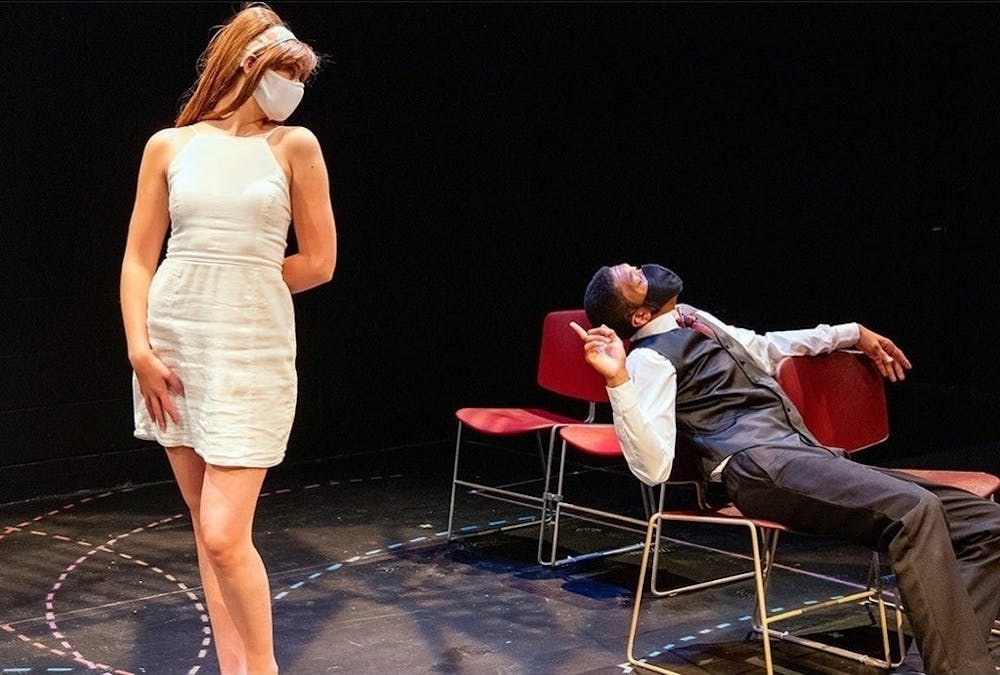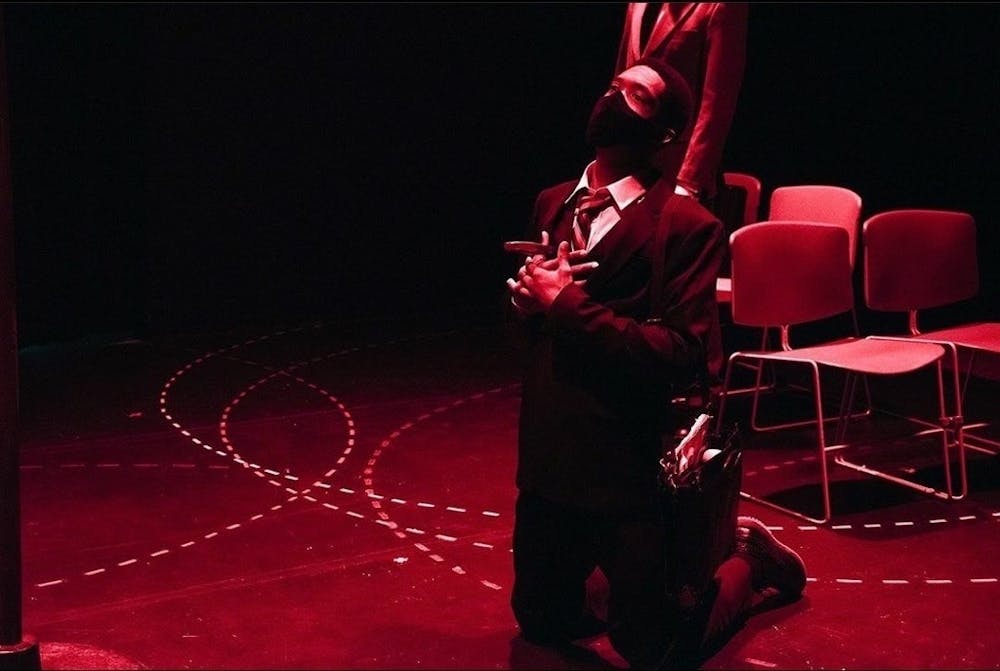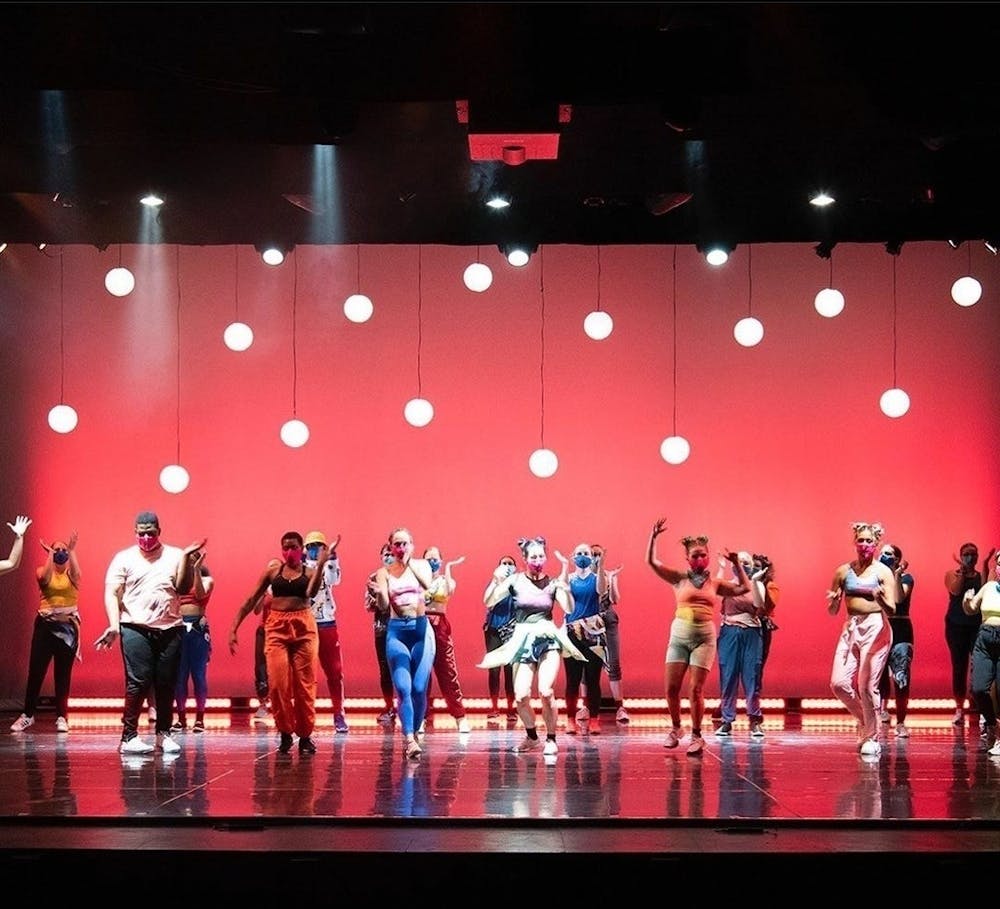With COVID-19 cases still high across the nation with nearly 50,000 new cases in the last 7 days, individuals from all walks of life are having to alter their schedules and plans. Coming back to Ball State University this fall has demonstrated that there will have to be a new normal for everyone. It is currently unacceptable to embrace a friend, walk around without a mask, or congregate in large groups. Even though the average person may miss these small gestures, some Ball State students do not have time to dwell on them as their entire academic lives have been turned upside down. One major that has had to do a lot of adapting for the recent semester is the acting major.
Classroom Change
The theatre majors at Ball State are currently having to reconstruct their way of working to accommodate for social distancing. Currently, for the studio classes for acting majors, or classes that they attend for acting work, they are being confined to their own separate boxes.
Sophomore acting major Bernadette Harding said, “there are 12 boxes taped out on the ground and each student has to stay in their own tiny box. Everyone else is zoomed into class, which is really tricky because then the teachers have to be teaching two things at the same time sometimes.”
With the limited space and availability for social interaction, the students in these classes are having to get creative with how they are learning. Harding expressed that it is not very easy to alter acting classes in such a way that they are as effective as they were for her last year.
“Acting is fully based on human interaction and with all that is going on it is something that we can’t do. We are having to work in our own spaces which is great for safety, but it really has its limitations regarding how you interact with others,” said Harding. “When you’re acting, you’re taking cues from a physical human being, but when you can’t see their face, and the only thing that you can see is their eyes, there’s lots of emotion you lose.”
Even with the tough task put in front of them, the theatre department has attempted to make the classroom a productive environment for their students to grow with quite a lot of success.
“Some stuff just doesn’t work at all and it’s really impossible to do without the natural feeling of touch. It’s very strange. But we’re finding new stuff that works really well too,” said Harding.
Exit Screen Right
Along with the changes in the classroom, the productions that theatre majors put on are having to be altered as well. With limited access to space and audiences, the theatre has taken to Zoom for a portion of their performances. Both the preparation for performances and the productions themselves are becoming Zoom-based.
The upcoming performance of She Kills Monsters: Virtual Realms is scheduled to open on Oct. 29 and will be completely virtual. The production, by Qui Nguyen, was written to be performed online. It was created this way to overcome the obstacles set in place by the current pandemic.
Other productions that are being moved online are the Cave Theatre series. Both Overpass by Julia Specht, opening on Oct. 6, and Babel by Jacqueline Goldfinger, opening on Nov. 10, have been arranged to premiere virtually.
The Show Must Go On
Even as the department is making alterations to do online performances, there is still hope for in-person work as well. While maintaining social distancing rules to keep their actors safe, the department has begun to do both Zoom and in-person rehearsals. Harding gave insight into how the theatre has begun finding creative ways to allow for their actors to interact with one another for her upcoming role as Amelia Pilford in The Children’s Hour by Lillian Hellman.

Image from Ball State Theatre and Dance
“As of now we are wearing masks and the stage is set up like a grid. We’re doing it in an abstract manner where all the blocking is on this grid. So, one actor stands on an ‘X’, and then your scene partner will stand on another ‘X.’ You then travel around the stage, but you have to stay within the grid and on an ‘X’ so that you maintain social distancing,” said Harding.

Image from Ball State Theatre and Dance
Though this is not a perfect solution, it allows for the students to get out from behind the screen and work with one another. This new and inventive way of going around a problem has allowed for the program to overcome some of the barriers that were placed before them.
Finding solutions is the only choice the theatre has to continue during COVID-19. To help support the theatre department during COVID-19, please take some time and keep an eye open for productions occurring in the near future by going to:
https://www.bsu.edu/academics/collegesanddepartments/theatredance/whats-on-stage/season-listing
Sources: Ball State University, CDC
Images: Ball State Theatre and Dance
Featured Image: Ball State Theatre and Dance




















